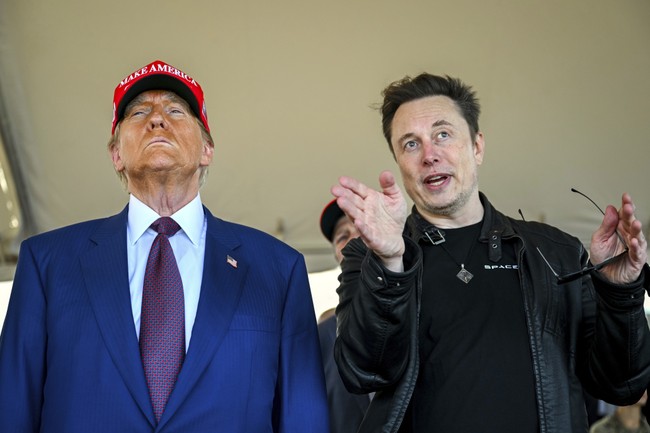How Trump's Tariffs Shape Global Trade Dynamics
Recent tariff announcements by President Trump have stirred global markets, impacting diplomatic relations and economic strategies across North America, China, and potentially the EU. The implications are profound.
Published February 04, 2025 - 00:02am

Image recovered from townhall.com
Tensions between the United States and its major trading partners have escalated as President Donald Trump unveils a robust set of tariffs targeting goods from Canada, Mexico, and China. This move, met with varied reactions globally, underscores Trump's use of tariffs as a strategic geopolitical tool aimed at recalibrating trade imbalances and addressing domestic economic priorities.
In recent communications, Trump announced a delay in imposing a 25% tariff on Mexico. The decision followed fruitful negotiations between him and Mexico's President Claudia Sheinbaum, which resulted in Mexico agreeing to deploy 10,000 guards along the border to curb the flow of fentanyl and illegal migrants. This agreement not only demonstrated a diplomatic approach to pressing bilateral issues but also paused tariffs that could have affected bilateral trade dynamics significantly.
Concurrently, Trump's administration has pressed ahead to implement a 25% tariff on imports from Canada and a 10% tariff on China. This multifaceted approach has stirred concerns about broader economic fallout, encompassing a potential rise in consumer prices in the United States. Fresh produce, automobiles, and electronics are among the categories most susceptible to inflationary pressures as these tariffs take effect. Experts warn that the American consumer market could soon witness visible price hikes across aisles as diverse as grocery and automobile showrooms.
On the political front, Trump has not shied away from signaling additional tariffs could be imposed on the European Union, criticizing their trade practices as inequitable. He underscored the United States' $300 billion trade deficit with the EU as justification for potential tariffs, indicating that his administration is prepared to take long-term steps towards mitigating such imbalances, despite potential short-term economic stresses.
The global implications of these tariffs extend to fears of sparking a comprehensive trade war, reminiscent of economic turbulences witnessed in previous global crises. The unilateral nature of Trump's tariff regime, characterized by its lack of negotiation with affected countries, has placed nations like Canada and Mexico in precarious economic positions, risking recessionary aftershocks. The Canadian government has already responded with its own 25% tariffs on American goods, indicative of the retaliatory cycle these measures could catalyze.
China, cautiously observing from a distance, has yet to retaliate with equivalent measures, instead exploring diplomatic solutions that could appease the United States. Notably, Chinese officials have hinted at revisiting 2020 trade agreements and addressing key issues, like the fentanyl crisis, further illustrating the tariff's potential as a tool for international negotiation.
In the automotive sector, these tariffs have introduced pressures that could reshape production strategies for global automobile giants. U.S. industries could see increased manufacturing activity as foreign brands like Porsche and Audi contemplate shifting production sites to American soil, aiming to circumvent tariffs while maintaining market access. However, consumers, particularly those from lower-income brackets, might bear the bulk of these costs as vehicle prices are anticipated to rise significantly.
While President Trump's strategies have stirred significant economic debates and geopolitical considerations, the long-term effectiveness and consequences of these tariffs remain subjects of intense scrutiny. As countries grapple with these changes, the ever-evolving landscape of global trade will require nimble strategies and concerted diplomatic engagements to navigate the challenges posed by these shifting policies.






